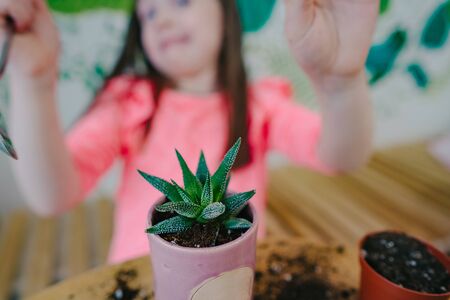1. Choosing the Right Bulbs for Your Climate
When it comes to planting flowering bulbs, one of the most important steps is choosing varieties that match your local climate. The USDA Plant Hardiness Zone Map is a great tool to help you determine which bulbs will thrive in your area. Each zone is based on average annual minimum winter temperatures, and flower bulbs have different tolerance levels depending on their species.
Understanding Your USDA Hardiness Zone
Before heading to the garden center, find out which USDA hardiness zone you live in. This will guide you toward the best-suited bulbs for your region. Heres a simple overview of common zones and suitable bulb types:
| USDA Zone | Recommended Flowering Bulbs |
|---|---|
| 3-5 (Cold Climates) | Tulips, Daffodils, Crocus, Hyacinths |
| 6-7 (Moderate Climates) | Alliums, Iris, Fritillaria, Anemones |
| 8-10 (Warm Climates) | Amaryllis, Freesia, Ranunculus, Calla Lilies |
| 10-11 (Hot Climates) | Dahlia, Caladium, Elephant Ears, Tuberose |
Seasonal Considerations for Planting Bulbs
In addition to climate zone, timing plays a big role in bulb success. There are two main categories of flowering bulbs—spring-blooming and summer-blooming—and they should be planted during different times of the year:
- Spring-blooming bulbs: These include tulips and daffodils. They need a period of cold dormancy and should be planted in the fall before the ground freezes.
- Summer-blooming bulbs: Examples are lilies and gladiolus. These do best when planted in spring after the last frost date has passed.
Tip:
If you live in a warmer region where winters aren’t cold enough for certain spring bulbs to go dormant naturally, you can pre-chill them in your refrigerator for 10-12 weeks before planting.
Regional Favorites Across the U.S.
Certain bulbs are regional favorites due to their reliability and beauty. Here are some popular picks by region:
| Region | Popular Bulbs |
|---|---|
| Northeast | Daffodils, Snowdrops, Tulips |
| Southeast | Cannas, Amaryllis, Rain Lilies |
| Midwest | Crocus, Alliums, Daylilies |
| Southwest | Iris, Freesia, Agapanthus |
| Pacific Northwest | Anemones, Camassia, Bluebells |
Selecting Quality Bulbs
No matter your location or preferences, always choose healthy bulbs. Look for firm bulbs with no signs of mold or rot. Bigger bulbs often produce stronger blooms. And remember to store unplanted bulbs in a cool, dry place until youre ready to put them in the ground.
Selecting the right flowering bulbs tailored to your climate and seasonal conditions sets the foundation for a vibrant garden full of color and life.
2. When and Where to Plant Your Bulbs
Getting the timing and location right is key to growing healthy, vibrant flowering bulbs. Whether youre dreaming of a spring garden bursting with tulips or a summer yard filled with lilies, knowing when and where to plant makes all the difference.
Best Time to Plant Flowering Bulbs
The planting time depends on whether your bulbs bloom in the spring or summer. Heres a quick guide:
| Bloom Season | Popular Bulbs | Best Planting Time |
|---|---|---|
| Spring | Tulips, Daffodils, Hyacinths, Crocuses | Fall (September to November) |
| Summer | Dahlias, Lilies, Gladiolus, Calla Lilies | Spring (After last frost – March to May depending on your zone) |
Understanding USDA Hardiness Zones
Your local climate plays a big role in bulb success. The U.S. Department of Agriculture (USDA) hardiness zones help determine what grows best in your region. Spring-blooming bulbs typically need a cold period, so they do well in zones 3–8. In warmer zones like 9–11, you may need to pre-chill bulbs before planting.
Tips by Region:
- Northern U.S. (Zones 3–6): Plant spring bulbs early in fall before the ground freezes.
- Southern U.S. (Zones 7–11): Choose heat-tolerant varieties and consider refrigerating spring bulbs for 6–8 weeks before planting.
- Pacific Northwest: Excellent for most bulbs due to mild winters and moist conditions.
- Southeast: Use raised beds or containers with good drainage to avoid rot from humidity.
Selecting the Right Spot in Your Garden
The perfect spot for your bulbs should offer the right mix of sunlight, drainage, and soil quality. Here’s what to look for:
Main Considerations:
- Sunlight: Most flowering bulbs love full sun (at least 6 hours per day). Some, like snowdrops and certain lilies, can tolerate partial shade.
- Soil Drainage: Well-draining soil is essential. Bulbs can rot if left in soggy ground. If needed, amend soil with compost or sand.
- Shelter from Harsh Winds: Especially for tall flowers like gladiolus or alliums that may need protection or staking.
- Avoid Low Spots: Water tends to collect in dips and can cause bulbs to rot—choose slightly elevated areas if possible.
A Quick Checklist Before You Plant:
- Select healthy bulbs—firm and free of mold or soft spots.
A little planning goes a long way when it comes to planting flowering bulbs. With the right timing and garden location, youll set yourself up for a stunning display season after season.
![]()
3. Preparing the Soil for Optimal Growth
Before you even think about planting your flowering bulbs, its essential to get your soil in top shape. Healthy, well-prepared soil sets the foundation for strong roots, vibrant blooms, and long-lasting plants. Heres how to make sure your garden beds are ready to support bulb growth.
Test Your Soils Drainage
Bulbs hate sitting in soggy soil. Too much moisture can lead to rot and poor growth. To test your soil’s drainage:
- Dig a hole about 12 inches deep and fill it with water.
- Let it drain completely, then fill it again.
- If the water drains within 4 hours, your soil has good drainage.
- If it takes longer, consider amending your soil or choosing raised beds.
Enrich the Soil with Organic Matter
Flowering bulbs thrive in nutrient-rich soil. Adding organic matter improves both fertility and drainage. Here are some popular soil amendments:
| Soil Amendment | Benefits | How to Use |
|---|---|---|
| Compost | Adds nutrients and improves texture | Mix 2-3 inches into the top 6-8 inches of soil |
| Aged Manure | Boosts nitrogen and organic content | Use well-rotted manure; avoid fresh manure before planting bulbs |
| Peat Moss | Improves moisture retention in sandy soils | Blend evenly with existing soil to balance water holding capacity |
| Perlite or Sand | Enhances drainage in clay-heavy soils | Mix into dense soils to improve air flow and prevent waterlogging |
Create the Ideal pH Balance
Most flowering bulbs prefer slightly acidic to neutral soil (pH between 6.0 and 7.0). You can buy an inexpensive pH testing kit at any garden center. If your soil is too acidic, add lime; if its too alkaline, mix in sulfur or peat moss.
Quick Reference: Adjusting Soil pH
| If Your Soil Is… | Add This… |
|---|---|
| Too Acidic (Low pH) | Lime or wood ash |
| Too Alkaline (High pH) | Sulfur, peat moss, or pine needles |
Till and Loosen the Soil Bed
Bulbs need loose, aerated soil to send down roots easily. Use a shovel or garden fork to break up compacted dirt at least 8-12 inches deep. Remove rocks, debris, and weeds during this process.
Prep Now, Plant Later
You don’t have to plant right after prepping the bed—doing this ahead of time gives the soil time to settle. Once your flower bulbs arrive, you’ll be ready to plant them in perfectly conditioned ground that gives them the best start possible.
4. Planting Techniques for Healthy Blooms
Getting your flowering bulbs off to a strong start begins with proper planting techniques. From choosing the right tools to understanding spacing and depth, every step plays a role in ensuring vibrant, healthy blooms. Heres how to do it the right way.
Step-by-Step Instructions for Planting Bulbs
1. Gather Your Tools
- Garden trowel or bulb planter
- Measuring tape or ruler
- Gardening gloves
- Watering can or hose with gentle spray setting
- Optional: compost or bulb fertilizer
2. Choose the Right Location
Select a spot that gets at least 6 hours of sunlight per day and has well-draining soil. Avoid areas where water tends to collect after rain.
3. Determine Proper Depth and Spacing
The general rule of thumb is to plant bulbs at a depth that is 2–3 times their height. Refer to the table below for common flower bulb types:
| Bulb Type | Planting Depth | Spacing Between Bulbs |
|---|---|---|
| Tulips | 6–8 inches | 4–6 inches |
| Daffodils | 6–8 inches | 6 inches |
| Crocus | 3–4 inches | 3 inches |
| Hyacinths | 5–6 inches | 4–6 inches |
| Iris (Dutch) | 4–5 inches | 3–4 inches |
4. Prepare the Soil
Loosen the soil and mix in some compost or bulb-specific fertilizer if desired. This boosts drainage and adds nutrients that support root development.
5. Plant the Bulbs Correctly
- BULB SIDE UP: Place each bulb with the pointy end facing up and flat root side down.
- COVER GENTLY: Fill in the hole with soil and pat lightly to remove air pockets.
- LABEL: Use plant markers if youre planting multiple varieties.
Watering Tips After Planting
Water thoroughly after planting to help settle the soil and activate root growth. If planting in fall, you typically wont need to water again unless theres a dry spell, since natural rainfall usually does the job.
Avoid These Common Mistakes
- Planting too shallow: Shallow bulbs are more likely to be damaged by frost or dug up by animals.
- Poor drainage: Soggy soil can cause bulbs to rot before they sprout.
- Packing too tightly: Crowded bulbs compete for nutrients and space, leading to smaller blooms.
- Mismatched climate: Make sure youre planting bulbs suited for your USDA Hardiness Zone.
- Lack of sunlight: Most flowering bulbs require full sun for best results.
A little planning and care go a long way when it comes to planting flowering bulbs. With these techniques, youll set yourself up for a colorful and blooming garden come spring—or even earlier!
5. Caring for Bulbs After Planting
Once your flowering bulbs are in the ground, your job isnt quite done. To ensure they thrive and bloom beautifully, its important to follow a few simple care steps. From watering to feeding and disease prevention, heres how to keep your bulbs healthy after planting.
Watering Routine
Bulbs need consistent moisture after planting to establish roots, but overwatering can lead to rot. Here’s a general guideline:
| Stage | Watering Needs |
|---|---|
| Immediately After Planting | Water thoroughly once to settle the soil |
| Fall/Winter (Dormant Period) | Minimal watering unless theres a dry spell |
| Spring Growth Period | Keep soil evenly moist, especially during sprouting and blooming |
Fertilizing Schedule
A little nutrition goes a long way with bulbs. Applying fertilizer at the right time helps strengthen their growth cycle.
Recommended Fertilizer:
- A balanced slow-release fertilizer (10-10-10 or 5-10-10)
- Bone meal or bulb-specific organic blends for root development
When to Apply:
- At Planting Time: Mix fertilizer into the soil below the bulb level.
- In Early Spring: Once shoots appear, apply another round of fertilizer around the base of the plants.
Disease Prevention Tips
Healthy bulbs are less prone to disease. Follow these tips to keep problems at bay:
- Avoid overwatering—too much moisture invites fungal diseases.
- Plant in well-drained soil to prevent rot.
- If you notice moldy or soft bulbs during planting, discard them immediately.
- Rotate bulb locations every few years to reduce soil-borne diseases.
Post-Bloom Care
After your bulbs have finished blooming, resist the urge to cut back the foliage right away. The leaves continue photosynthesis, storing energy for next year’s flowers.
What To Do After Blooming:
- Deadhead flowers: Remove spent blooms to prevent seed formation.
- Leave foliage intact: Allow leaves to yellow and die back naturally—this may take several weeks.
- No mowing: Don’t mow over bulb areas until all foliage has completely withered.
Caring for your bulbs after planting is just as important as getting them in the ground properly. With regular attention and seasonal care, your garden will reward you with vibrant blooms year after year.
6. Storing and Replanting Bulbs for Next Season
To keep your garden blooming beautifully year after year, it’s important to know how to properly lift, store, and replant flowering bulbs. Many bulbs—like tulips, daffodils, and gladiolus—can be saved from one season to the next with just a bit of care. Here’s how to do it the right way.
When to Lift Your Bulbs
Wait until the foliage has turned yellow or brown before lifting your bulbs. This allows the plant to absorb as much energy as possible for next year’s growth. Typically, this happens about 6–8 weeks after flowering.
Steps to Lift Bulbs
- Use a garden fork or spade to gently loosen the soil around the bulb.
- Carefully lift the bulb without damaging it.
- Shake off excess soil but do not wash the bulbs unless necessary.
Curing and Cleaning
Before storing, allow bulbs to cure in a dry, well-ventilated area for about 1–2 weeks. This helps prevent mold and rot during storage. After curing:
- Remove any remaining soil or loose outer layers (called tunics).
- Trim dead foliage down to about an inch above the bulb.
Best Storage Practices
The key to good storage is keeping bulbs cool, dark, and dry. A garage, basement, or closet can work well if temperatures stay between 50–60°F (10–15°C).
Ideal Storage Conditions by Bulb Type
| Bulb Type | Storage Temperature | Humidity Level | Storage Tip |
|---|---|---|---|
| Tulips | 50–55°F | Low | Store in paper bags with ventilation holes |
| Daffodils | 50–60°F | Low to moderate | Avoid stacking; use shallow boxes with newspaper lining |
| Gladiolus | 40–50°F | Low | Cure thoroughly and dust with fungicide if needed |
Replanting for Next Season
Once spring or fall planting season arrives (depending on your bulb type), inspect stored bulbs for any signs of rot or disease. Discard any soft or moldy ones. Then replant them at the proper depth in well-drained soil according to their specific needs. Always follow spacing guidelines to avoid overcrowding.
Tip:
If you’re unsure when to replant, a good rule of thumb is: fall for spring-blooming bulbs like tulips and daffodils, and spring for summer bloomers like gladiolus.
With just a little effort each year, lifting and storing your bulbs can reward you with beautiful blooms season after season.


